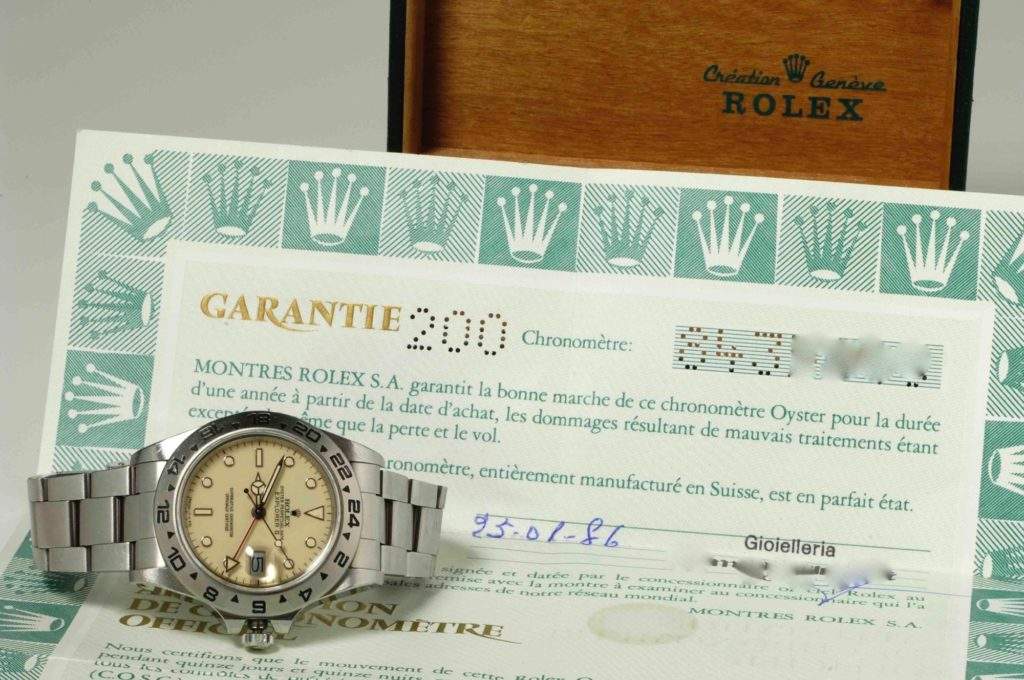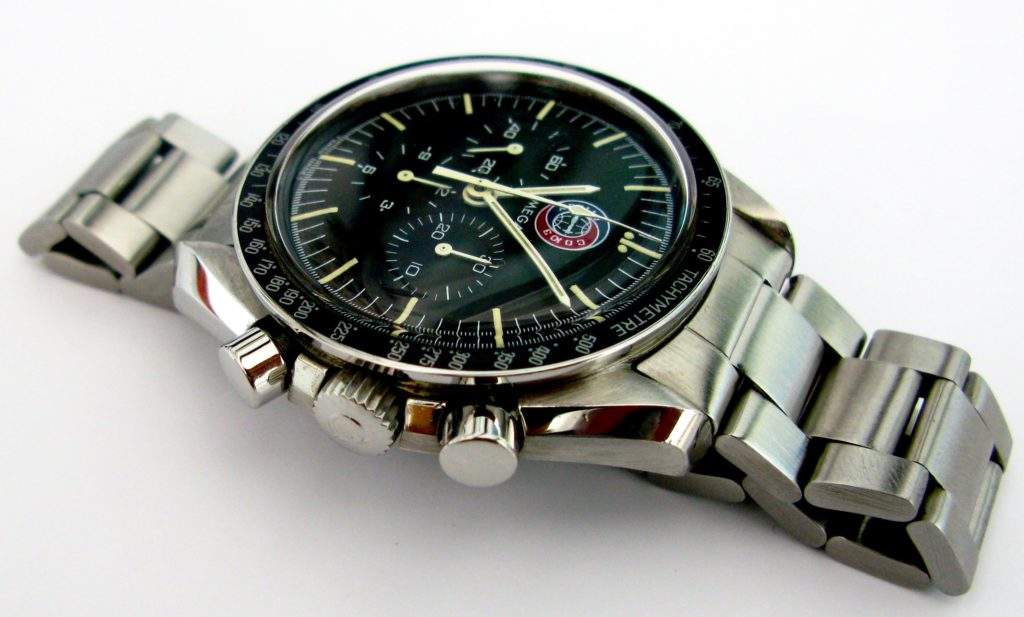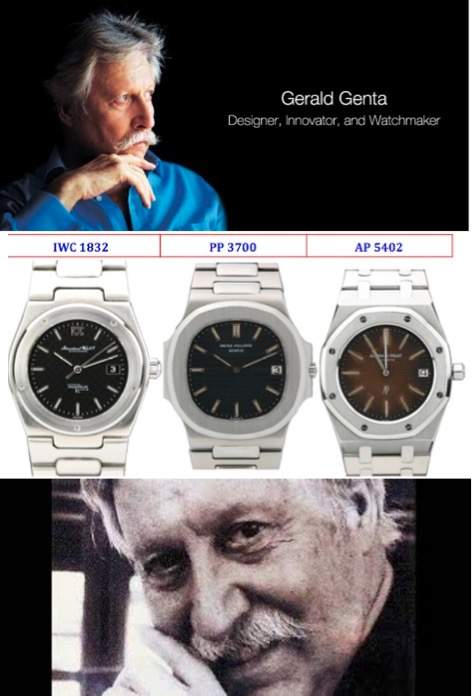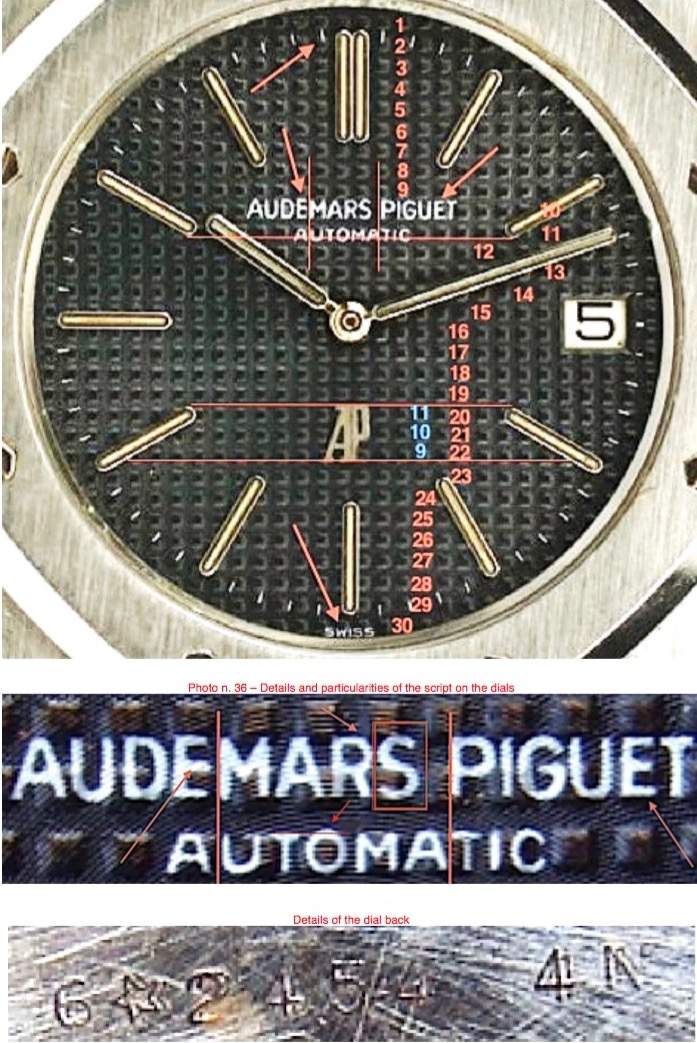
Mstanga. It is a name that only rings a bell if you are obsessive about watches.
And nobody is more obsessive about vintage watches than the man himself. I first heard about him through Hodinkee a while back and was curious ever since to meet the ‘king of detail and passion‘. I got my chance this year at Parma after reading one of his detailed reports (the Nautilus)*.
We shared a very informal lunch together and I quickly developed a strong liking for his low key and extremely down to earth personality. He is humble even though he knows more than 99.5% of watch collectors on this planet. With his level of incredible detail he has built a cult like following and now advises auction houses, private collectors, bloggers (like me) what is correct and legitimate using his guides as a basis. I was curious what drove him to write his extremely detailed reports which are legendary.
I have said this before and I will say it again. Italy is a dominating force in the vintage watch community due to the world class scholars, collectors, dealers and publishers. Mstanga plays a big part in this role of ensuring that Italy will remain a strong force for a long time in the vintage watch industry. His level of knowledge and detail is world class and I know nobody who can match him.
I also wanted to know more about the personal side of Mstanga. What were his other hobbies besides watches and how does his wife tolerate his passion and obsession for watches?
I hope you enjoy a few personal insights to the legend known as Mstanga.
(If you would like to learn more about Mstanga and his reports or simply share want to share some opinions and have a chat – he can be contacted at mstanga@gmail.com). You can also follow his Instagram here.
*His detailed reports include: The Nautilus 3700, the AP Royal Oak 5402, The Polaris E859, the Patek 3417 and the Omega Apollo Soyuz.
At what age did you become interested in watches?
Mstanga: I was about 24 years old, it was 1986 when my girlfriend gave me as a gift (or rather I recommended it to her) a Rolex Explorer II ref. 16550 white and after a couple of years the dial turned to cream under my eyes! I remember it like yesterday and my first instinct was to send the watch to ROLEX for a dial replacement. Fortunately this did not happen.
It shows you how so much has changed over the years!
How has the vintage watch market changed since back in 1986?
Mstanga: Edmond, everything has changed! Allow me to make the following analogy:
In the 1970s, you meet a girl on a business or private trip, you fall in love with her and then you have to separate and return to your city. What options do you have to be able to contact or to see her again? You can call her home by phone or write her a letter. Those were the two options back then. Now here in 2017, five minutes after having said hello you already have the ability to chat with her, see her instagram profile, send her pictures etc. With watches it is the same! Everything is faster and at your fingertips! This does not mean it is nicer or more exciting though.
Thankfully what has not changed is passion and good taste; Every collector if he wants to think of himself as such, must be animated by a great passion and helped by good taste. This two attributes of passion and a sense of taste will allow the collector to navigate the vintage watch world well.
What fascinates you about vintage watches in general?
Mstanga: Edmond, let me ask you this question; What sensations would you feel if you had dinner with Audrey Hepburn versus an actress of today? Well that answers your question! Hepburn, like with vintage watches, is timeless style. The thought of wearing a piece of history produced 40-70 years ago when no numerical control machines were used, adds the allure. A few imperfections back then was an accepted factor and today this is charming.
This leads to also that no two watches are identically the same, or preserved in the same way. Also let us not forget, many iconic vintage models are linked to unforgettable and historical moments. Like the Omega Speedmaster Moonwatch but also the Rolex big crown linked to Sean Connery wearing it in first James Bond films.
You are part of the Italian watch collector community which continues to be dominant in vintage watches. Does your nationality help you find good watches? Help you with your reports?
Mstanga: Edmond I am a small man in a land of giants, a land of the world’s finest watch collectors. The passion for vintage was born mainly in Italy thanks to these giants. To have the opportunity and the privilege to exchange views with some of these Italian collectors has been of great help to my studies and listening to their encouragement gave me great motivation.
Can we say you are obsessed with details? You are known for the most detailed watch reports in the world!
Mstanga: Yes, absolutely! I’m obsessed with the details, I’m firmly convinced that the details make the difference in any kind of study, discipline or industry.
In my reports, I have channeled all my passion and obsession with details to try to understand and reveal certain puzzles (such as the Nautilus’ dials for example) but as always I would like to point out that everything I write in my reports is only the fruit of my studies and it represents my personal opinions that is not the absolute truth of which the only owners of that can be the manufacturers houses themselves.
What is your favourite brand if you had to choose one watch brand?
Mstanga: It is like asking what is your favourite child (if you have more than one). It is impossible or very difficult to answer.
I would say perhaps Patek Philippe. But there are many iconic watches out there made by many great manufacturing firms like Rolex, Omega, Longines, Jaeger, Audemars, Cartier, Vacheron, Eberhard, Universal and IWC. But Patek is Patek (smiles).
I know you love the Nautilus from Patek. What does this watch mean to you? Why is it so mythical today?
Mstanga: The Nautilus ref. 3700 was for me as “love at first sight”, it represents the quintessence of the luxury sports watch.
For me it means passion, mystery, study, friendships. It was hard to study the Nautilus and try to understand all the peculiarities and the mysteries, this study allowed me to connect with and get to know many collectors from all over the world with some of whom I have developed close friendships even though I had never met them personally.
Above all, the best part, the one that is PRICELESS in my hobby are the daily chats with these collectors. This has no price and I promised that one day I will along with my wife travel all over the world and try to get to know them personally.
So to answer your question why is Nautilus so mythical nowadays, because it has a wonderful timeless shape, a fantastic caliber, a very well-known name, the most beautiful and famous box ever produced, and then because it is a Patek (smiles).
You love the Nautilus. Why do you find Genta’s designs so great?
Genta was probably the greatest wristwatch designer of all time. Even if someone does not know his name, he will certainly know some of the watches he designed like AP Royal Oak, PP Nautilus, IWC Ingenieur. These are watches that changed the industry forever.
Can you share a fun fact or two about the Nautilus that collectors might not be aware of?
Mstanga: It seems (although we cannot be 100% sure) that in 1978 Patek Philippe created a prototype with a ribbed white dial, like the black ones, manufactured by the Stern Freres dial factory (see picture here). It is interesting to mention that in 2015 this Nautilus with prototype case was sold at Sotheby’s Geneva for an impressive amount of Swiss Francs 250,000 which confirms the interest of collectors around the Nautilus.
It was only in 2012 that Patek Philippe added white dial versions of the Nautilus to its catalogue.
The second fun fact is the following:
For Gerald Genta the Nautilus was ‘un coup de foudre‘ – a case of love at first sight! “It was his favorite watch. He loved his Nautilus,” recalls Evelyne Genta of her late husband. Among all the various models he owned, it was “the prototype that he liked best of all. So now Edmond question is? “Where is that prototype?” (smiles).
Most collectors concentrate on the speedmaster within Omega but you have highlighted the Apollo? Why?
Mstanga: Because the Speedmaster Apollo Soyuz (1976) has a lot of peculiarities that make it absolutely unique.
It is linked to a very important historical event, and whoever is my age knows well what the “cold war” is about. Omega with this watch, created a lot of unique features never seen before: For the first time, we do not find the Speedmaster writing in a Speedmaster, for the first time a Speedmaster is produced in a limited numbered edition (500 of which 100 are incorrectly assembled). For the first and only time, a speedmaster has a “Rolex Oyster similar” bracelet, for the first and only time a speedmaster is equipped with huge 5.5 mm chrono buttons and then the dial with the mission logo and the caseback.
Edmond, try to imagine a Rolex Daytona (maybe a Newman) with all these peculiarities (smiles).
At the moment you have 5 reports on; PP Nautilus 3700 Jumbo, AP Royal Oak ref. 5402, JLC Polaris, Omega Apollo Soyuz and PP “Amagnetic” ref. 3417. Do you plan to expand this one day to other models?
Mstanga: These studies have involved a great deal of effort. The Nautilus report took me 10 years to make and involved intense discussions with auction houses, catalogue research, collectors phone calls and many weeks spent in the lab of my trusted watchmaker to photograph and analyse them all.
This would have not been possible without the incredible passion of others that have supported me. In terms of other models, I have a few in mind like the Seamaster 300 and the Aquatimer by IWC but right now nothing is concrete.
But if I have to be honest, the real dream in the drawer would be to collaborate with Patek Philippe for the realization of a book entirely dedicated to the Nautilus. The ability to access archives and try to understand the many unresolved puzzles of the Nautilus with Patek, that would be a dream for me. Will it probably remain just a dream? Who knows.
Do you have other hobbies besides watches?
Yes many! I like to practice Tai Chi, High Fidelity, cycling, walking and basketball, to name a few.
Does your wife tolerate your obsession with watches well?
Yes, pretty well I would say, especially when she asks me to wear one of my watches. But, as you well know, for obvious reasons my answer can not always be “YES” (smiles).
Below the famous white dial explorer that turned cream with time and was the first watch of Mstanga.

The famous Omega Apollo Soyuz which Mstanga choose to concentrate on instead of the Speedmaster because of its uniqueness

Perhaps the most important watch designer of the last 40 years, Gerald Genta below with three of this creations.

To get a sense of detail of the work of Mstanga, consider the dial of the AP 5402. Look at the dial layout with comments below what observations he has. This is incredible detail at the highest level.

After careful observation of a big number of watches, we have concluded that there are at least 2 (perhaps three) types of ref. 5402 dials.
The “Type 1” dial can be found in all “A” serials up to approx A1200 and has 30 visible (sometime 31) rows of mini-squares.
The “Type 2” dial can be found in all subsequent dials – including furniture ones – and is characterised by 32 visible (sometime 33 or 34) rows of mini-squares.
We have come to these conclusions by detailed observation of nearly one hundred dials, and these findings could help to identify native correspondence between dial and serial number.
The typical “low AP logo” is applied just above the index at six, and its apex is aligned on an ideal line between the indices at 4 and 8 o’clock. This corresponds in the Type 1 dials
to a position on the ninth, tenth and eleventh row from the bottom of the dial.
In type 1 dials the AUDEMARS PIGUET script and specifically AUTOMATIC is placed on the eleventh row of mini-squares from the top.
In type 2 dials the type of scripts is the same, but they will be on the twelfth or thirteenth row according to the number of rows of the dial.
These that follow are details which it’s worth to check in the AUDEMARS PIGUET and AUTOMATIC scripts, (photo n. 36) to avoid exemplar with anomalous and not coherent dials
-the two “E” in the script are different. The first has the tie longer than arm and the horizontal bar. The second “E” instead has the horizontal bar longer than the arm and the tie.
– the “M” of AUDEMARS is aligned at the left with the “U” below of AUTOMATIC;
– the “P” is aligned on the left with the “T” below.
– the “R” is constantly inclined towards the “S”
– the shape of the “S” and the “G” need to be looked at very carefully.
– the first “T” of AUTOMATIC is a little lower vertical aligned with the “O”
The original dial of the watch will have SWISS at six, while the furniture dial will have “SWISS MADE”
To match the type of dial to the serial of the watch, we can use the table below:
“A” serials: all have “AP” at six, and type 1 dial up to serial 1200. After serial 1200 have type 2 dial and SWISS.
“B” serials: all have “AP” at six, all have type 2 dial, SWISS
“C” serials: most “C” serial dials (certainly up to 1810 -which we have observed) have AP at six, while the last ones have AP at twelve. All have type 2 dial and SWISS
“D” serials: all have AP at twelve, and type 2 dial
5402BA (gold): all have AP at six, SWISS
5402SA (gold and steel): all (or the most of them) have AP at six, SWISS
